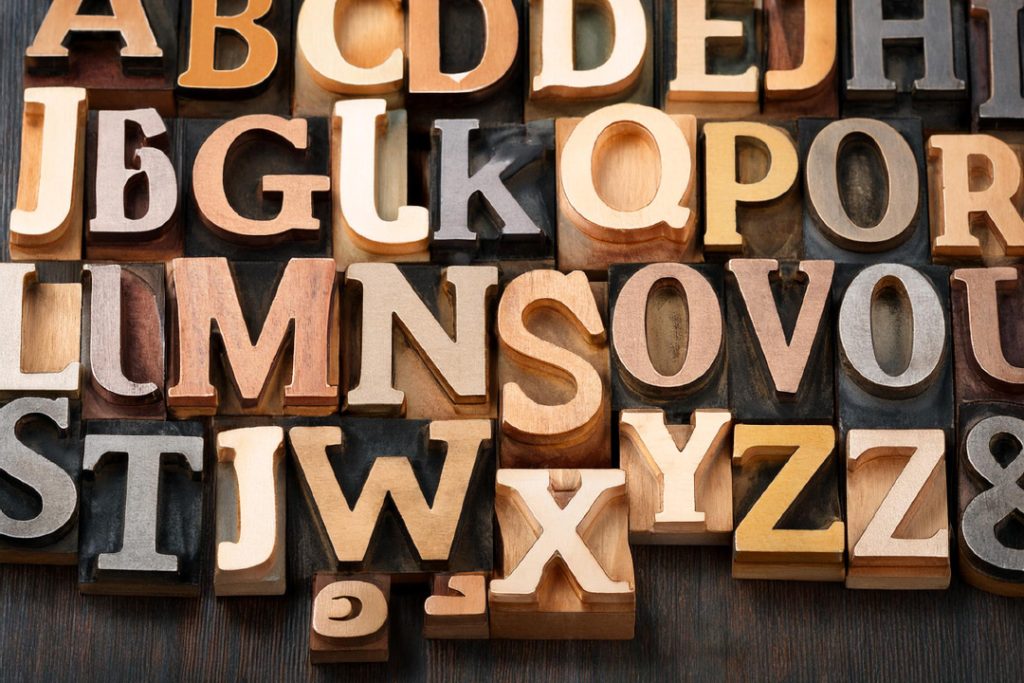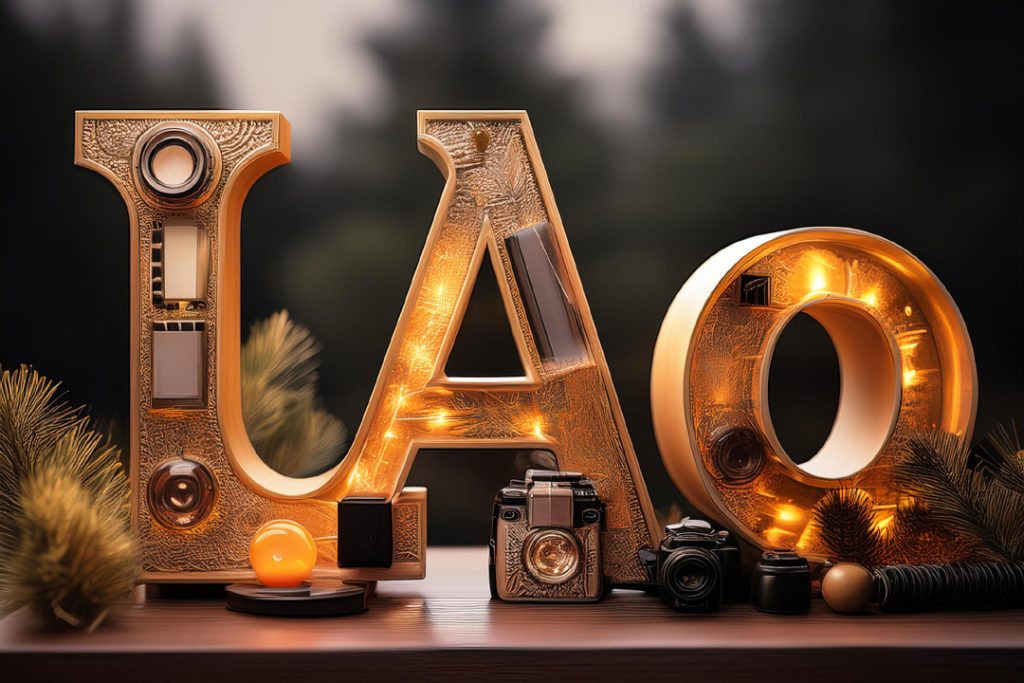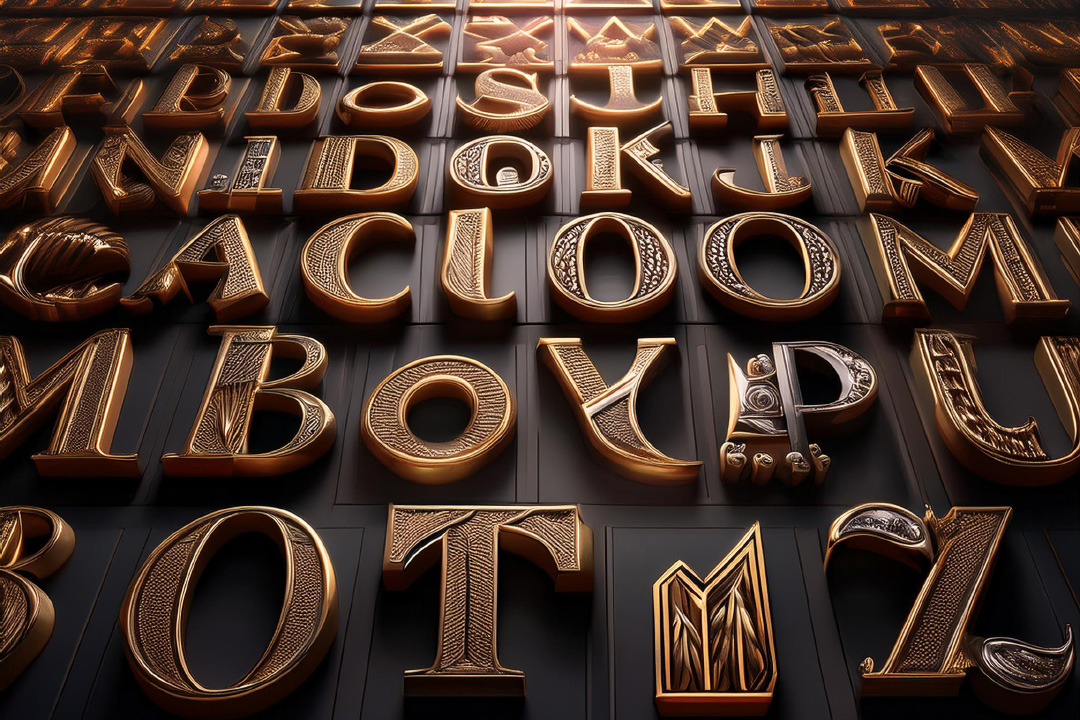The Impact of Typography in Website Design
Typography’s more than just picking a pretty font; it’s like the secret sauce that can make or break your website. Let’s see how these letters have a big say in user vibes and making things easy to read.
Typography and User Experience
Typography is a big deal on any site. It’s like the comfy chair in a room—it makes sure you’re relaxed enough to stick around and read. When everything clicks, you forget it’s there, but if it’s off, you’re out of there before you know it.
It isn’t just about eye-candy, it’s how the text dances across the screen. Font types, size of the letters, the space between lines—these all decide if you’re gonna stick around or bounce. A good font makes reading like a stroll in the park, being accessible to everyone (Clio Websites).
Even cooler, fonts have moods. They tell your visitors if you’re the laid-back type or all business. Your fonts are like the vibe your site is throwing out (LinkedIn).
| Role of Typography | Impact on User Vibes |
|---|---|
| Making Reading Easy | Happy eyes, less squinting |
| Helping Comprehension | Clear paths to info |
| Showing Off Personality | Matches your cool factor |
| Leading With Style | Puts a spotlight where it counts |
Wanna know more about creating an awesome layout? Take a look at our guide on website design best practices.
Font Choices for Digital Accessibility
Making text accessible is a must-do, especially for folks with visual challenges. Choosing clean fonts, high contrast, and readability add up to a site everyone can enjoy (LinkedIn).
Some fonts help, others hinder. Sans-serif types get a lot of love for screens, especially for readers who face a bit more of a challenge. Color contrast should be sharp enough so everyone finds the text easy to see.
Remember these key pointers for user-friendly fonts:
- Font Size: 16px minimum for a comfy read.
- Line Height: Makes it 1.5 times the font size; your eyes will thank you.
- Color Contrast: 4.5:1 ratio makes sure everyone gets a piece of the text pie.
| Accessibility Basics | Recommended Rules |
|---|---|
| Font Size | Go no smaller than 16px |
| Line Height | 1.5x the size of your font |
| Color Contrast | At least 4.5:1 |
Want more tips on making inclusive sites? Check out our articles on color psychology in web design and branding in web design.
Stick these ideas into your digital toolkit, and watch your site morph into something that welcomes everyone with open arms and maybe even gets a smile or two. Adjust your typography thoughts to wrap everyone in a cozy blanket of readability.
Principles of Effective Typography
Typography is like the secret sauce in website design. Get it right, and your content isn’t just read—it’s felt. Let’s chew through readability, legibility, and what we call typeface psychology (fancy words for how fonts mess with our brains).
Readability and Legibility Factors
Reading ain’t just about seeing words; it’s about understanding them without squinting or brain strain. A top-notch user experience depends on clean, hassle-free text (Medium Article Link).
Readability
Readability is all about making sure the text can glide through your brain like a hot knife through butter. Here’s what you need to remember: font size, line height, and how cramped those letters are (tracking).
| Readability Factor | Recommended Practice |
|---|---|
| Font Size | 16 pt for body text, 10-11 pt for emails (Section 508) |
| Line Height | 1.5 to 2 times the font size |
| Character Spacing | Don’t squish those letters too close together or spread them like they’re in a long-distance relationship |
Legibility
Legibility is a fancy way to say, “Can you spot the A from the O?” Mainly, sans-serif fonts rule the digital roost because they’re as straightforward as it gets. Think Arial or Helvetica (Section 508).
| Legibility Factor | Recommended Fonts |
|---|---|
| Font Choice | Grab a sans-serif fam like Arial, Helvetica |
| Font Color | Go high-contrast. Black on white? Classic move. |
Being inclusive means playing by rules like the Section 508 standards, which say keep it 16 pt minimum and never get too fancy in the font dept. This ensures visibility for all, especially if someone’s got a hard time seeing.
Understanding Typeface Psychology
Okay, here’s where it gets fun: typeface psychology. Fonts do more than look pretty—they’re the mood-makers of the digital dance floor.
| Typeface | Emotion | Use Case |
|---|---|---|
| Serif (e.g., Times New Roman) | Feeling all grown-up and serious | Best for: Headings, everything official |
| Sans-serif (e.g., Arial) | Crisp, modern vibes | Perfect fit: Body text, anything digital |
| Script (e.g., Brush Script) | Fancy pants, personal touch | Go for: Invitations, artsy pages |
| Display (e.g., Impact) | In-your-face and loud | Ideal for: Tags, promotions screaming for attention |
Typography is big on vibes (LinkedIn). Choosing the right font sets the mood, enhancing or totally messing up the website’s feel. Picture this: Arial on a tech site says, “Hey, I’m all modern and chill,” while Times New Roman on a legal page keeps things serious and trustworthy.
With a good grip on readability, legibility, and how fonts mess with our heads, we can make websites not just work but talk to us. Wanna dig deeper? Check out more on website design best practices and sharpen those design skills!
Implementing Typography in Web Design
Typography is a big deal when it comes to giving a website its look and feel. It not only makes things pretty but also keeps the site user-friendly. Let’s dive into picking fonts and making sure they work well on all devices.
Font Selection for Websites
Picking the right font isn’t just about what looks cool; it’s about making sure people can read your stuff easily. Your font should fit the vibe of your brand and be easy to read (branding).
For online content, rules like ADA, ABA, and Section 508 say it’s best to use sans-serif fonts for body text, making it easier for everyone to read (Section 508). Serif fonts? Save those for when you want to shout something or for headings.
Common Font Choices:
| Context | Suggested Font Style | Example Fonts |
|---|---|---|
| Body Text | Sans-Serif | Arial, Helvetica, Verdana |
| Headings | Serif or Sans-Serif | Times New Roman, Georgia, Impact |
| Emphasis Text | Italic/Oblique | Arial Italic, Georgia Italic |
Size matters when it comes to fonts:
| Document Type | Recommended Font Size |
|---|---|
| Website Text | 15 – 16 px |
| Email Messages | 13 – 15 px |
Don’t go too tiny or folks with less-than-perfect eyesight will have a tough time. Picking the right font and size is not just about looking good; it’s about making your website accessible to everyone.
Responsive Typography Practices
When designing with responsiveness in mind, your typography should play nice with every gadget out there. Here’s our cheat sheet for keeping your text friendly on all screens:
- Fluid Typography: Opt for CSS tricks like
vw(viewport width) for sizes that change with the screen.h1 { font-size: 4vw; } - Media Queries: Tweak sizes and styles at different screen widths to keep everything readable.
@media (max-width: 600px) { body { font-size: 14px; } } - Scalable Units: Go for
emorremunits to adjust based on user settings and give that personalized touch. - JS Libraries for Responsive Text: Play with tools like FitText.js for responsive headlines.
| Screen Size | Best Font Size |
|---|---|
| Desktop Headings | 24 – 30 px |
| Mobile Headings | 20 – 24 px |
| Tablet Body Text | 15 – 16 px |
| Mobile Body Text | 12 – 14 px |
Responsive typography makes sure folks can easily read your content no matter how or where they’re viewing it. Check out our write-up on website design best practices if you want more ideas.
Typography is more than just eye candy; it pulls in your audience and makes your site more accessible. Make it a top concern in your design plan, and see what magic it brings to your online presence. For more on arranging your fonts for the best effect, see our tips on typographic hierarchy.
Creating Visual Hierarchy with Typography
Typography in website design is like casting a spell, guiding users through your content without missing a beat. Setting up a clear visual hierarchy ensures that the big stuff pops and keeps everyone hooked on what you’ve got to share.

Typographic Hierarchy Basics
In website design, typographic hierarchy is your secret weapon for showing readers what’s what. Here’s how we can make typography work its magic:
- Size: Big text grabs the spotlight. Use bigger fonts for headings, save the smaller ones for the finer print.
- Weight: Bold fonts scream “Look at me!” Use bold for headlines and subheadings.
- Color: Spice it up with color. Standout colors make sure important bits get noticed.
- Contrast: Too many shades can muddle things. Keep contrast sharp to make your key points shine.
- Case: ALL CAPS get noticed, right? Use them for those can’t-miss messages.
- Position: The spot on the page matters. Put important stuff where eyes naturally land.
- Alignment: Consistent alignment helps steer the reader smoothly. Use it wisely on that spectrum: left, right, or center.
We’re aiming for three knockout levels of typographic hierarchy: heading, subheading, and body text. Throw in some captions or quotes depending on the vibe you’re going for.
| Hierarchy Level | Example Text Style | Font Size (px) | Font Weight |
|---|---|---|---|
| Heading | Big Bold Heading | 36 | Bold |
| Subheading | Subtle Subheading | 24 | Medium |
| Body Text | Regular Read | 16 | Regular |
For more juicy practices, check out our guide on website design tips.
Importance of Font Pairing
Font pairing is crucial for creating a visual splash and keeping the design game strong. The right mix of fonts can set the tone and vibes for your site (LinkedIn). Here’s how we nail font pairing:
- Complementary Fonts: Pair up fonts that play nice together. A serif with a sans-serif is a classic duo.
- Contrast: Keep it lively with contrasting fonts to sidestep the snooze fest.
- Consistency: Don’t go font crazy! Stick to two or three for that clean, consistent look.
- Purpose Alignment: Match fonts with your brand aura to boost the user vibe.
| Primary Font | Usage | Secondary Font | Usage |
|---|---|---|---|
| Serif (like Times New Roman) | Headlines | Sans-serif (like Arial) | Body Text |
| Sans-serif (like Helvetica) | Headlines | Serif (like Georgia) | Body Text |
Good font pairing isn’t just eye candy—it’s how we tell our story. Strong, bold fonts for headlines with neat, simple fonts for the rest ensure both readability and style.
Test out different combos and sync them with your site’s theme to ride the typography wave. For insights on mixing colors and typography, check out our take on color psychology in web design.
Designing with typographic hierarchy and slick font pairing, we’re crafting structured style in our little digital wonderlands! Peek into our guide on branding in web design to see how these tricks bring your brand to life.
Advancing Web Typography Trends
Variable Fonts and Animation
We’re diving into the world of variable fonts, and let’s just say, it’s like opening a box of endless possibilities for your website design! These nifty fonts offer crazy levels of flexibility with their ability to adjust weight, width, and more. It’s like having a font that dances to the beat of your drum, changing its form as your users navigate your site. And guess what? It’s not just eye candy; it makes sites load faster and delivers a seamless vibe!
Why Variable Fonts Rock:
- One font file can do it all.
- Speedier page loads.
- Makes everything smoother and cooler.
And get this, animated typography is the new cool kid on the block. By adding a little motion to your fonts, you can grab people’s attention, stir emotions, and turn every visit into a memorable experience. Whether it’s a cheeky hover or a jaw-dropping text transition, it’s showtime for your static type!
Check out our quick rundown of variable fonts you need to know:
| Variable Font | Awesome Bits | What It’s Good For |
|---|---|---|
| Acumin | Flawless with weights and widths | Headlines, body text |
| Recursive | Style-swaps like a pro between mono and sans | Displays, code |
| Roboto Flex | Infinite tweaks across nine axes | Responsive layouts |
Take these fonts for a spin and spice up your projects!
Kerning, Leading, and Line Length
Now let’s talk kerning, leading, and line length—these champs are the secret sauce that makes or breaks readability and overall vibe on a website.
Kerning is all about how those letters cozy up next to each other. When tweaked just right, your text feels like it flows rather than just sits there staring back at the reader (HubSpot Blogs). It’s an art form, folks!
Leading gets its name from old school printing but is all about vertical spacing between lines now. Nailed it, and your readers will glide through your content like it’s a joyride.
Line Length means measuring how congested or spaced out your text feels. Aim for 45 to 75 characters per line, anything more, and you’re asking the eyes to work double shifts; shorter leads to a clunky read.
Here’s your cheat sheet for killer typography:
| Typography Trick | Sweet Spot | Why It Matters |
|---|---|---|
| Kerning | Match it to the font style | Boosts readability |
| Leading | 1.4 – 1.6 x font size | Reader comfort zone |
| Line Length | 45 – 75 characters per line | Keeps em reading |
We’re all about these tips for making your designs not just pop but speak to your audience. Don’t forget to check out our stuff on branding and best practices to get your typography just right.
Playing around with these tips will have your designs not just looking slick but giving your users a top-notch experience. So hop on the typography train and let’s create something epic!
Practical Tips for Website Typography
Alright folks, let’s chat about giving your website’s typography a serious glow-up! We’re not just choosing any old fonts here; we’re creating an inviting visual vibe that’s easy on the reader’s eyes. Ready? Let’s roll!

Font Consistency and Pairing
Keeping your fonts in tune is like having a playlist that flows perfectly. Stick with two, maybe three, fonts tops, so your site doesn’t end up looking like a wild party gone wrong. Reserve one for your headings, another for the main text, and maybe one more for those unique touches.
Pairing fonts? Think of it like a stylish couple: a classic serif for the headlines, matched with a chill sans-serif to back it up in the body text. It’s a combo not just easy on the eyes, but friendly to everyone’s digital devices too!
| Font Type | Sample Fonts | Use Case |
|---|---|---|
| Serif | Times New Roman, Georgia | Headlines |
| Sans-Serif | Arial, Helvetica | Main Text |
| Script/Display | Lobster, Pacifico | Fancy Bits |
Don’t forget, it’s not just the type—sizes, weights, and spacing count too. Keep things predictable and friendly with one font for all headings and another for the main content. Predictability makes reading smooth and enjoyable! Need more design smarts? Swing by our piece on website design best practices.
Font Sizes for Headings and Body Text
Pick the right font size like you’re sizing up new shoes—they’ve got to fit just right! Heading sizes should be bold and attention-grabbing, while body text should be easy to read without a magnifying glass. Here are some go-to sizes to consider:
| Text Type | Suggested Size (px) |
|---|---|
| H1 | 32 – 48 |
| H2 | 24 – 36 |
| H3 | 20 – 28 |
| H4 | 18 – 24 |
| H5 | 16 – 20 |
| H6 | 14 – 18 |
| Main Text | 16 – 18 |
Big, bold headlines should catch eyes immediately, and your main content should invite them to stay and read the whole story. For more, peek at this guide by Lemon and the Sea. Keep the hierarchy clear so readers effortlessly glide through your words. Want more on killer layouts? Check out our web design layout principles.
Typography is a major player in how folks interact with your site. Make sure it not only looks good but reads well too! Following these tips will make your website not just easy on the eyes but fun to navigate. For additional gems on web style, see our articles on branding in web design and color psychology in web design.
Here some recommended links selected for you: The Best Books of the Month, Todays best Deals at Amazon, Best Sellers in Cell Phones & Accessories and last but not least the easy and great way to send a gift for the holidays: Amazon.com eGift Card (Instant Email or Text Delivery).



